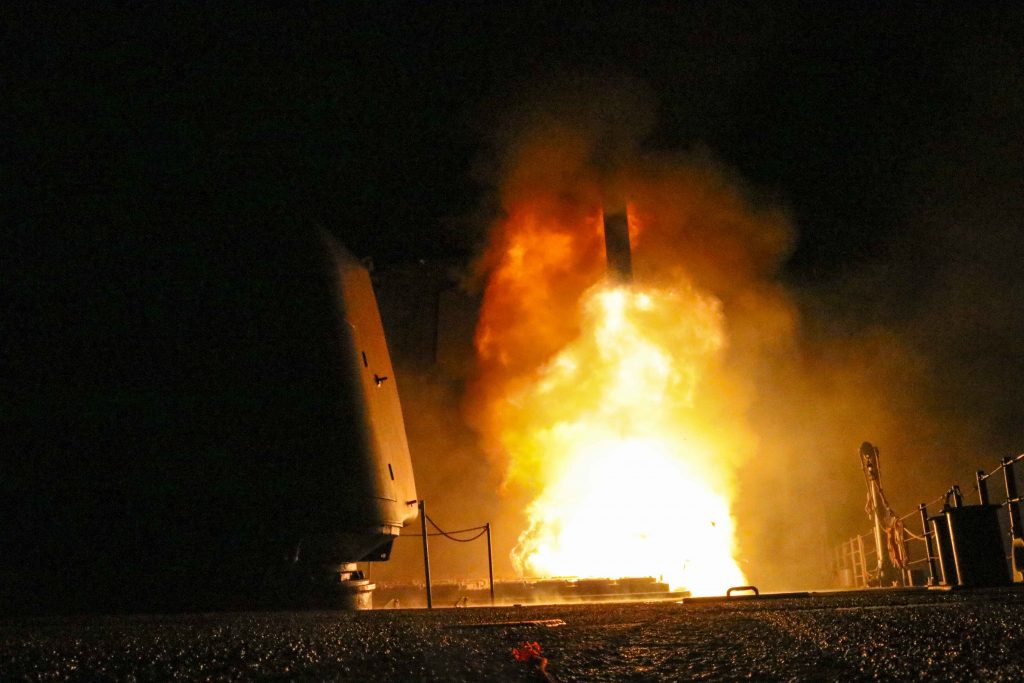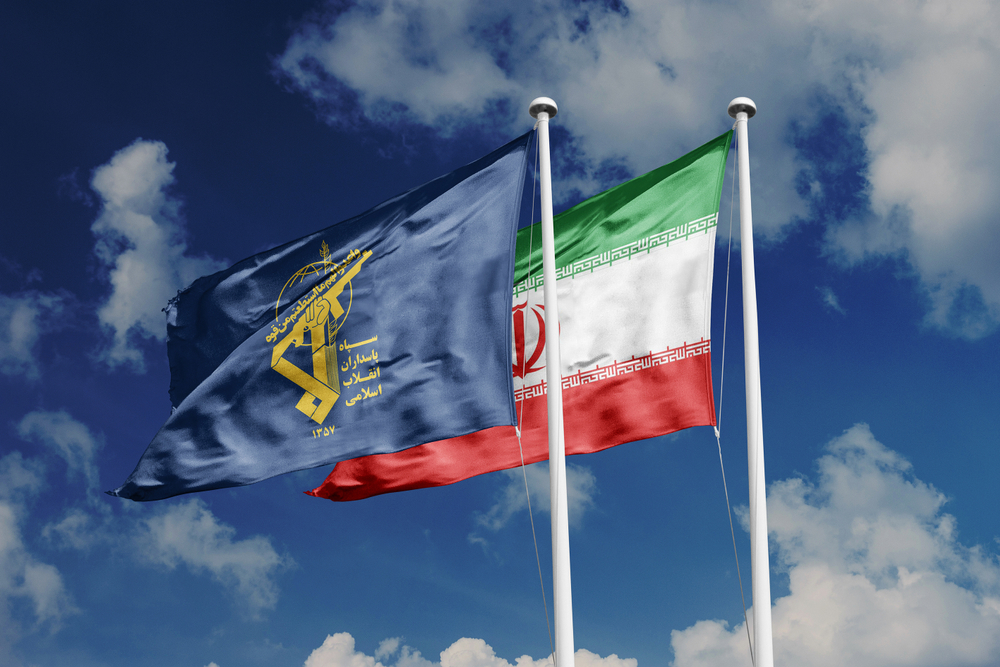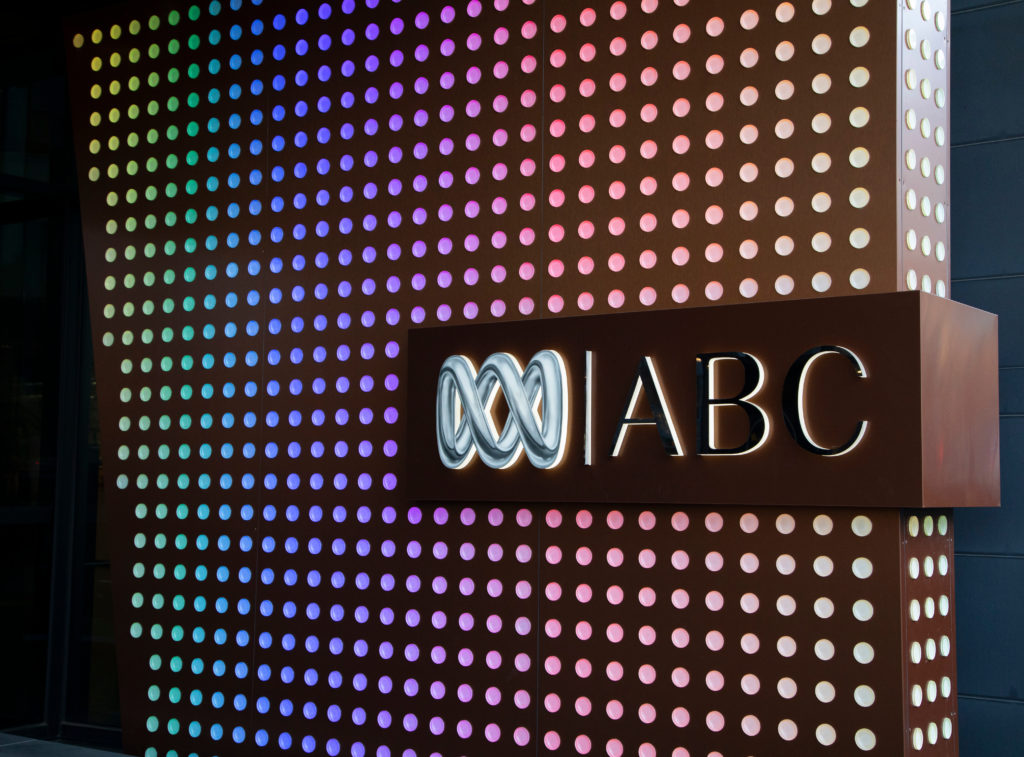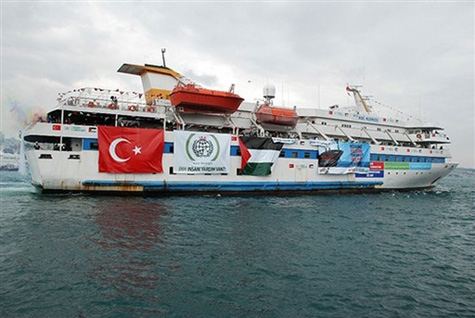Article 3
The Real Next War in Syria: Iran vs. Israel
By Thomas L. Friedman
New York Times, April 15, 2018

Israeli soldiers taking part in a training session last week in the Golan Heights. Credit: Jalaa Marey/Agence France-Presse — Getty Images
SYRIA-ISRAEL BORDER, Golan Heights — Stop me if you’ve heard this one before: Syria is going to explode. I know, you have heard that one before, but this time I mean really explode. Because the U.S., British and French attack on Syria to punish its regime for its vile use of chemical weapons — and Russia’s vow to respond — is actually just the second-most dangerous confrontation unfolding in that country.
Even more dangerous is that Israel and Iran, at the exact same time, seem to be heading for a High Noon shootout in Syria over Iran’s attempts to turn Syria into a forward air base against Israel, something Israel is vowing to never let happen. This is not mere speculation. In the past few weeks — for the first time ever — Israel and Iran have begun quietly trading blows directly, not through proxies, in Syria.
And this quiet phase may be about to end.
Israel and Iran are now a hair-trigger away from going to the next level — and if that happens, the U.S. and Russia may find it difficult to stay out.
Let me try to explain what is unfolding from a lookout post on the Syrian-Israel border, where I stood a couple of days ago. To follow along at home, I highly recommend this website, which tracks the multiple interlocking Syrian conflicts in real time and is used by the U.N. observers here on the Golan Heights.
Let’s start with the fact that the latest U.S., British and French cruise missile punishment attack appears to be a one-off operation and the impact will be contained. Russia and Syria have little interest in courting another Western raid and raising the level of involvement in Syria by the three big Western powers. And the three Western powers do not want to get more deeply involved in Syria.
It is the potentially uncontained direct shooting war brewing between Israel and Iran that is much more likely and worrisome, because it may be about to enter round two.
Round one occurred on Feb. 10, when an Iranian drone launched by a Revolutionary Guards Quds Force unit operating out of Syria’s T4 air base, east of Homs in central Syria, was shot down with a missile from an Israeli Apache helicopter that was following it after it penetrated Israeli airspace.
Initial reports were that the Iranian drone was purely on a reconnaissance mission. But the official Israeli Army spokesman, Brig. Gen. Ronen Manelis, said Friday that the drone’s flight path and Israel’s “intelligence and operational analysis of the parts of the Iranian unmanned vehicle” indicated that “the aircraft was carrying explosives” and that its mission was “an act of sabotage in Israeli territory.”
I have no ability to independently verify that claim. But the fact that the Israelis are putting it out should raise alarm bells. If it is true, it suggests that the Quds Force — commanded by Iran’s military mastermind Qassem Suleimani — may have been trying to launch an actual military strike on Israel from an air base in Syria, not just reconnaissance.
“This is the first time we saw Iran do something against Israel — not by proxy,” a senior Israeli military source told me. “This opened a new period.”
It certainly helps to explain why Israeli jets launched a predawn missile raid on the Iranian drone’s T4 home base last Monday. This would have been a huge story — Israel killed seven Iranian Quds Force members, including Col. Mehdi Dehghan, who led the drone unit — but it was largely lost in the global reaction to (and Trump tweets about) President Bashar al-Assad’s use of chemical weapons two days earlier.
“It was the first time we attacked live Iranian targets — both facilities and people,” said the Israeli military source.
(After the story appeared, the Israeli Army’s spokesman’s office disputed the characterization and accuracy of the raid by my Israeli source, and emphasized that Israel maintains its policy to avoid commenting on media reports regarding the raid on the T4 airfield and other events. He would not comment further.)
Russian and Syrian military officials both attributed the attack to Israel and the Iranians not only openly announced their embarrassing losses through the semiofficial Fars news agency — they have played down previous indirect casualties from Israeli strikes in Syria — but then publicly vowed to take revenge.
“The crimes will not remain unanswered,” Ali Akbar Velayati, a top adviser to Iran’s supreme leader, said during a visit to Syria.
Since then, senior Israeli defense officials have let it be known that if the Iranians were to strike back at Israeli targets, Israel may use the opportunity to make a massive counterstrike on Iran’s entire military infrastructure in Syria, where Iran is attempting to establish both a forward air base, as well as a factory for GPS-guided missiles that could hit targets inside Israel with much greater accuracy — inside a 50-meter radius — and deploy them from Syria and with Hezbollah in Lebanon.
These defense officials say there is zero chance Israel will make the mistake it made in Lebanon – of letting Hezbollah establish a massive missile threat there – by letting Iran do the same directly in Syria.
Now you can understand why it is such a dangerous situation – even without the U.S., French and British punishment for Assad’s use of chemical weapons.
Iran claims it is setting up bases in Syria to protect it from Israel, but Israel has no designs on Syria; it actually prefers the devil it knows there – Assad – over chaos. And it has not intervened in the civil war there except to prevent the expansion of Iran’s military infrastructure there or to retaliate for rebel or Syrian shells that fell on Israel’s territory.
I understand Iran’s security concerns in the Gulf; it faces a number of hostile, pro-American Sunni Arab powers trying to contain its influence and undermine its Islamic regime. From Iran’s perspective, these are a threat.
But what is Iran doing in Syria?
Tehran’s attempt to build a network of bases and missile factories in Syria – now that it has helped Assad largely crush the uprising against him – appears to be an ego-power play by Iran’s Quds Force leader Suleimani to extend Iran’s grip on key parts of the Sunni Arab world and advance his power struggle with President Hassan Rouhani. Suleimani’s Quds Force now more or less controls — through proxies — four Arab capitals: Damascus, Beirut, Baghdad and Sana.
Iran has actually become the biggest “occupying power” in the Arab world today. But Suleimani may be overplaying his hand, especially if he finds himself in a direct confrontation with Israel in Syria, far from Iran, without air cover.
After all, even before this, many average Iranians were publicly asking what in the world is Iran doing spending billions of dollars — which were supposed to go to Iranians as a result of the lifting of sanctions from the Iran nuclear deal — fighting wars in Syria, Lebanon and Yemen.
That is surely one reason Iran has not retaliated — yet. Suleimani has to think twice about starting a full-scale, direct war with Israel, because of another big story many people have not noticed: Iran’s currency is collapsing back home. Consider this April 12 story on CNBC.com:
The Iranian rial “has plummeted to a record low amid growing economic and political uncertainty, causing a rush to the banks as Iranians desperately try to acquire U.S. dollars with exchanges forced to shut their doors to prevent long and chaotic lines.” The rial has lost one-third of its value just this year, the story noted.
Moreover, Israeli military officials believe Russian President Vladimir Putin and Suleimani are no longer natural allies. Putin wants and needs a stable Syria where his puppet Bashar Assad can be in control and Russia can maintain a forward naval and air presence and look like a superpower again — on the cheap. Iran’s President Rouhani probably also prefers a stable Syria, where Assad has consolidated his power and that is not a drain on the Iranian budget. But Suleimani and the Quds Force seem to aspire to greater dominance of the Arab world and putting more pressure on Israel.
Unless Suleimani backs down, you are about to see in Syria an unstoppable force — Iran’s Quds Force — meet an immovable object: Israel.
Fasten your seatbelt.
BACK TO TOP |








